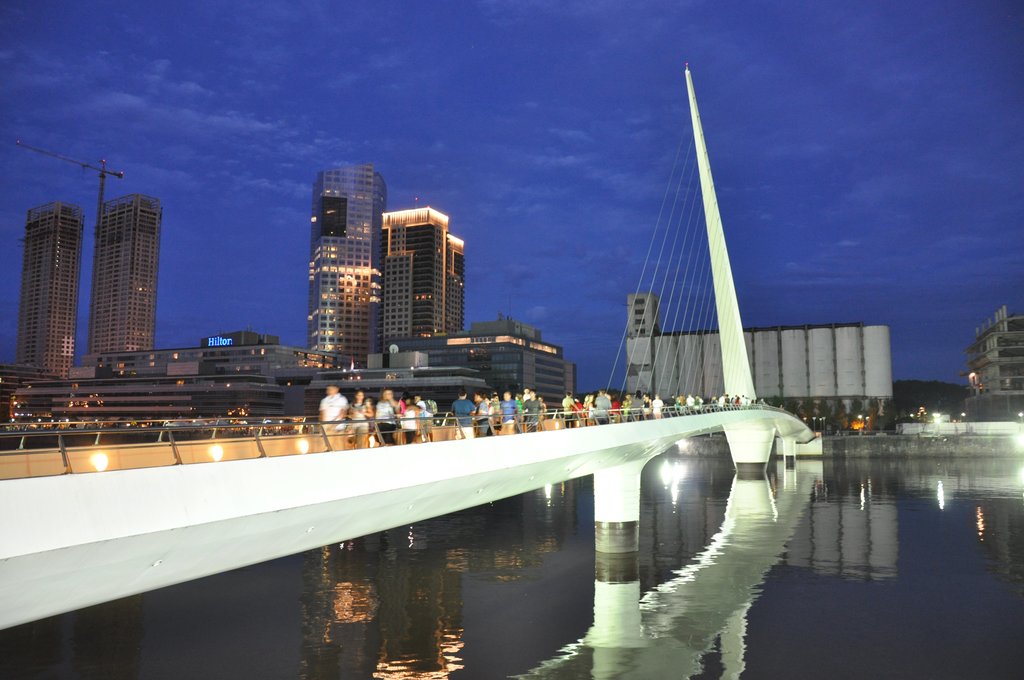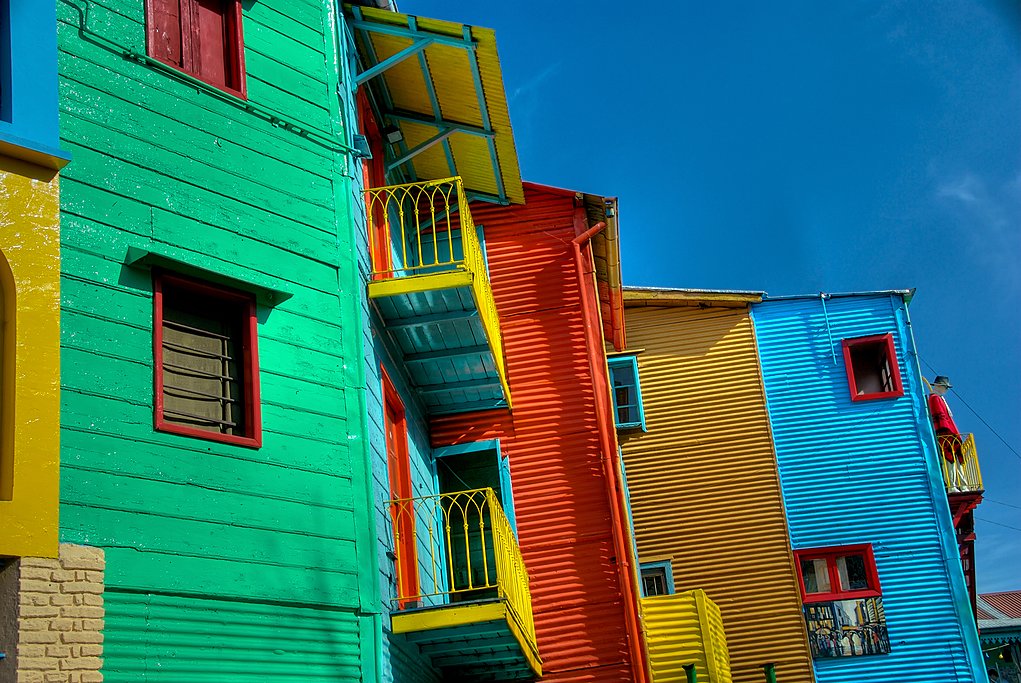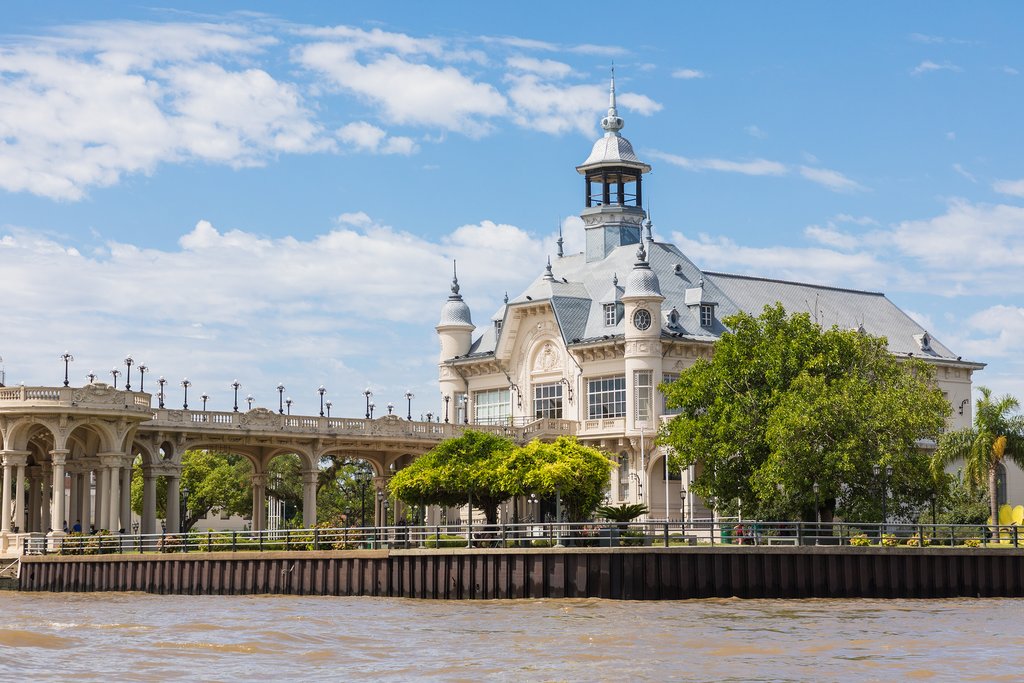Highlights
- Taste wines and tour vineyards in Chile's famous Casablanca Valley
- Stroll the colorful streets of coastal Valparaiso & Viña del Mar
- Take in the romance of Buenos Aires with a city tour and tango show
- Explore freshwater canals and museums in the charming village of Tigre
Brief Itinerary
| Day | Highlights | Overnight |
|---|---|---|
| Day 1 | Arrival in Santiago de Chile | Santiago |
| Day 2 | Casablanca Valley Wine Tour | Santiago |
| Day 3 | Day trip to Viña del Mar & Valparaiso | Santiago |
| Day 4 | From Santiago to Buenos Aires | Buenos Aires |
| Day 5 | Buenos Aires City Tour, Dinner, and Tango Show | Buenos Aires |
| Day 6 | Full-Day Excursion to Tigre | Buenos Aires |
| Day 7 | Goodbye Buenos Aires! |
Detailed Itinerary
Day 1: Arrival in Santiago de Chile

Welcome to Chile! Upon arrival at Santiago International Airport, a driver will meet you and transfer you to your hotel. You'll have the rest of the day to explore the city at your leisure.
Suggested activities include:
-
Hike to the top of Cerro San Cristobal, the most magnificent viewpoint in Santiago. When visiting any new city it's a good idea to get your bearings by surveying the area from a high vantage point. Pathways lead 850 meters (2,788 feet) up this central hill to a series of lookouts that offer wraparound views of Santiago. Enjoy the reconnoitering, and if you aren't the hiking type not to worry: you can catch a scenic gondola to the top.
-
Stroll the cobblestone streets of Barrio Bellavista. On the north side of Santiago, you'll find this trendy enclave, at once fashionable and bohemian. Brightly painted old houses adorned with graffiti art sit alongside modern shopping complexes featuring an eclectic array of eateries and bars. It's a great place to come for dinner out, a glass or two of Chilean red, and people watching from a patio table.
-
Visit the Plaza de Armas, located in Santiago's historic center. There's a lot of history within the four corners of this expansive stone plaza, as it was founded all the way back in 1541. Also here is the impressive Catedral Metropolitana, a neoclassical church dating to 1748 and whose towering twin bell towers dominate the north side of the plaza.
- Snap pics in front of the Palacio de la Moneda. Chile's opulent Presidential Palace (known simply as "La Moneda") is just a short stroll from the Plaza de Armas, and like the plaza, it's filled with history. It was here in 1973 that Chile's armed forces, backed by the U.S. government, overthrew President Salvador Allende, kicking off a brutal right-wing military dictatorship that would last for 17 years. Today the country is under democratic rule, and visitors are welcome to visit the palace.
For dinner be sure to get out of the hotel and enjoy a culinary adventure in the city. In recent years Santiago has emerged as a global foodie destination. Chilean chefs are reinventing traditional dishes like empanadas, cazuelas (stews), and seafood with ingredients harvested all the way from the northern deserts and southern Patagonian regions. You can find great restaurants and wine bars not only in the Bellavista neighborhood but also in the revitalized historic barrios of Yungay and Italia.
Day 2: Casablanca Valley Wine Tour

Today you will be whisked away a mere hour west to the Valle de Casablanca. This fertile valley near the Pacific coast is ideal for growing grapes, as the sea breezes come in from offshore and provide the perfect weather conditions for them to thrive. It's also an area famous for producing organic, all natural wine grapes.
You'll tour two wineries on this trip, the first being Casa Marín. Besides producing top-quality wines, Casa Marín is famous for being Chile's first female-founded bodega. The vineyard here sits on rolling hills above the town of Lo Abarca, just over a mile from the Pacific. The tour includes a stroll around the grounds and facilities, where you'll get a sense of the ambiance and terroir, and indulge in a tasting of three wines.
The second winery you'll visit today is Viñedo Matetic, a larger, well-known vineyard. Here a bilingual guide offers a tour of the grounds, including the vineyards and the panoramic views of the valley that surrounds them. After learning a bit about the growing process, the tour culminates with a tasting in their underground cellar, where you can also purchase any bottles that strike your fancy.
After the tour, you'll return to your hotel in Santiago.
Day 3: Day trip to Viña del Mar & Valparaiso

Today you'll leave the capital on an excursion to central Chile's Pacific Coast. You're in for a treat because on this trip you'll be visiting two incredible neighboring cities: Viña del Mar and Valparaiso. These places are unique in that they're as different atmospherically as they are close in proximity.
First, you'll arrive in Viña del Mar, an upscale coastal resort city teeming with shopping complexes, commercial high-rises, boutiques, and well-manicured gardens. The city's modern image is the result of many buildings being rebuilt after the numerous earthquakes that have hit the Chilean coast over the years. That said, you can still find some early 20th century landmarks, like the Germanic Wulff Castle and the Venetian-Gothic Vergara Palace, the former home of the founder of Viña del Mar. Indeed this city is the perfect place to enjoy a seaside lunch at one of the many upscale restaurants on the shore.
Your next visit is to the port city of Valparaiso, located adjacent to Viña del Mar. This colorful metropolis is the artistic and bohemian soul of the country. It's filled with street art, music, and poetry. Moreover, it's a throwback to the turn of the 20th century when electric trollies coasted along the waterfront and lurching funicular elevators carried passengers to the highest points in the city.
You can start exploring Valparaiso by visiting the old plazas of Sotomayor and Aníbal Pinto. Then hop in the Reina Victoria funicular and ascend to the top. From here you can wander the hilly neighborhoods of Cerro Alegre, Cerro Concepción, and Cerro Florida. It's on this last hill where you'll find La Sebastiana, a museum that was once the home of famed Chilean poet Pablo Neruda. No matter where you go here, you can always find sweeping views looking out over the colorful houses to the Pacific coast and the blanket of blue water running out to the horizon. Valparaiso is like San Francisco reimagined by Dr. Seuss.
Afterward, it's time to hop back in the minivan, transfer to Santiago, and return to your hotel.
Chat with a local specialist who can help organize your trip.
Day 4: From Santiago to Buenos Aires

After breakfast, transfer from your hotel to the airport for your flight to Buenos Aires, Argentina.
Welcome to Argentina! Renowned as the "Paris of South America," and the "Queen of El Plata," the capital city of Buenos Aires is defined by passion. This is exemplified in the rich tango heritage and its citizens' limitless enthusiasm for fútbol (soccer), which is far and away the country's most popular sport.
When you arrive at the airport, your driver will be waiting to take you in a private car to your hotel where you can relax after a long flight. But make no mistake: the city will beckon you. So after a quick recharge, be sure to venture out into the welcoming arms of Buenos Aires and explore. The best starting point would be the city center.
Suggested activities include:
Visit the Obelisco, which might be the most famous icon of the city. This obelisk (which even Argentines admit is a little too reminiscent of the Washington Monument) is worth a visit for its location alone. It sits right in the middle of Avenida 9 de Julio, which boasts a whopping 16 lanes, making it the widest city street in the world.
Stop by the Teatro Colon, one of South America's premier opera houses. The horseshoe-shaped gallery features 2,487 seats and incredible acoustics. Even if you plan on taking a tour or catching a show here on another day, it's always breathtaking to pass by its exterior. The Colon's neoclassical facade has been the face of one of the most handsome buildings in Buenos Aires since its opening in 1908.
Stroll Puerto Madero, an upscale waterfront neighborhood adjacent to downtown. Puerto Madero may be the "new money" finance center of Buenos Aires, but it's also one of the most pleasant walking areas in a city famous for its walking areas. A romantic stroll involves walking over the canal on the Puente de Mujer ("Woman's Bridge") at sunset.
Dine at an Argentine steakhouse or parilla. When night falls and dinnertime arrives, do like the locals and enjoy a thick, juicy steak (Argentina has some of the best beef in the world) drizzled with the nation's famous chimichurri (a garlic, herb, and vinegar sauce). Know that Buenos Aires is a culture that thrives after dark, and it's not uncommon for locals to have dinner well past nine in the evening, especially on weekends.
Day 5: Buenos Aires City Tour, Dinner, and Tango Show

After breakfast, a fascinating city tour will provide an overview of Buenos Aires as well as a better understanding of Argentina’s history and culture. During this three-hour tour, you will visit Retiro as well as Avenida 9 de Julio, South America’s widest avenue featuring El Teatro Colon and Obelisco. You will also pass through the historic and architecturally imposing city center, home to the Congress Building, Plaza de Mayo, Avenida de Mayo, and Casa Rosada. Then, walk along the modern docks of Puerto Madero before heading to the oldest neighborhood in the city, San Telmo, stopping by upmarket Recoleta for the local cemetery and Plaza Francia and La Boca, the city's original port.
In the evening, enjoy a scrumptious meal accompanied by free-flowing wine and a tango show, one of Argentina's most iconic cultural highlights. Experience the heartbeat of Argentina first-hand before heading back to your hotel to relax for the night.
Day 6: Full-Day Excursion to Tigre

Today you will travel up the Río de la Plata to the point it converges with the Paraña River Delta, which is comprised of a series of islands about an hour north of Buenos Aires. During the boat journey, take the time to enjoy views of the B.A. city skyline from the deck. Upon arrival at the delta, you will then enter the network of freshwater canals and sail among the many islands that make up this unique region.
The main port on these canals is in Tigre, a Venetian-style village whose relaxed nature and small-town charm stand in stark contrast to Buenos Aires' bustling energy and expansive metropolis. This is where you'll spend the better part of the day. You'll have the freedom to stroll the waterfront, stop in at the cafes and bistros, and otherwise enjoy this gem of B.A.'s provinces any way you see fit.
Suggested activities include:
- Browse Puerto de Frutos. Right on the water, you'll find the "Port of Fruits," a mazelike network of craft markets, produce stalls, artisanal goods, and even garden centers. You're sure to find the perfect snack or souvenir to appeal to your tastes and suit your interests.
- See the town on a tour bus. The Bus Turistico is a hop on/hop off tour bus that covers the basic highlights of Tigre as it drives along the waterfront. The total circuit lasts about an hour and is a quick and relaxing way to get to know this town.
- Visit Tigre's museums. Some of the town's museums are covered on the Bus Turistico. However, if you opt to explore Tigre on foot, you can see them at your own pace. the Museo de Arte is the most popular, as it's housed in the grandest building in town: the Belle Epoch-inspired Tigre Club. What used to be an exclusive hotel and country club in the early 20th century now houses an impressive collection of Argentine artworks that span two centuries. Other highlights include the Naval Museum as well as the Museo de Mate. The latter is a fun little museum that offers an overview of mate (the tea-like herb cultivated in the Paraná region of the country). It showcases some mate paraphernalia and even offers tastings at their "mate bar."
After a full day spent discovering this evocative town, you'll hop on a train back to Buenos Aires. Your tour officially ends at the Retiro station, back in the city.
Day 7: Goodbye Buenos Aires!

Enjoy your last hours in the cosmopolitan capital of Buenos Aires. At the scheduled time, your driver will pick you up and transfer you by private car to Ezeiza International Airport, where you'll catch your return flight home.


